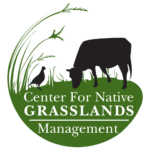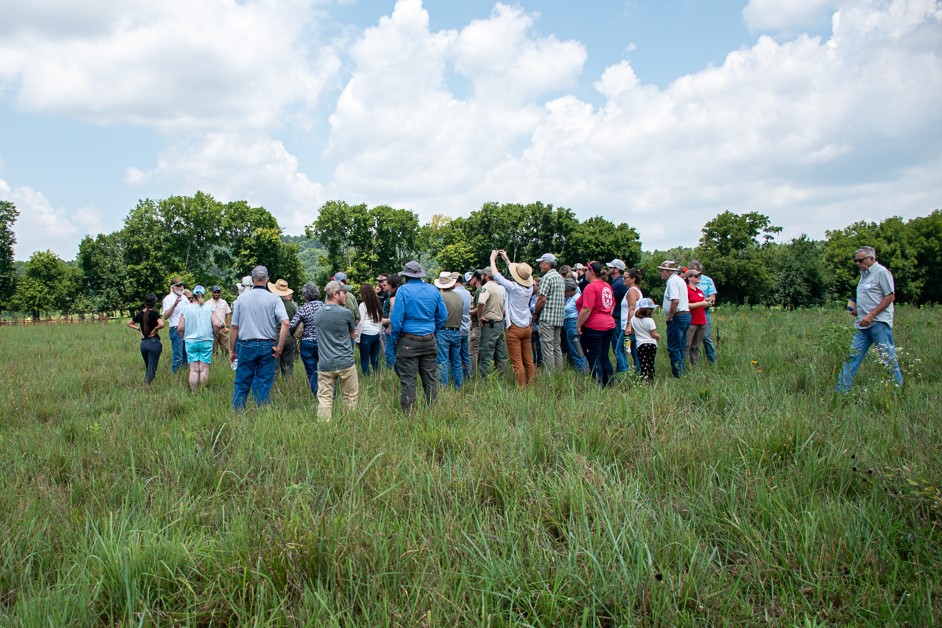
Birds and bees benefit from cattle grazing in native grass and forb pastures. That was one of several takeaways from the Beef and Bees Workshop held Tuesday, July 25.
Pat Keyser, Center for Native Grasslands Management director and School of Natural Resources professor, hosted the workshop. He and graduate research assistant Jessica Prigge gave presentations on research they conducted with post-doctoral research associate Eric Bisangwa, Jonathan Richwine of Arkansas State University and graduate research assistant Keagan Swilling.
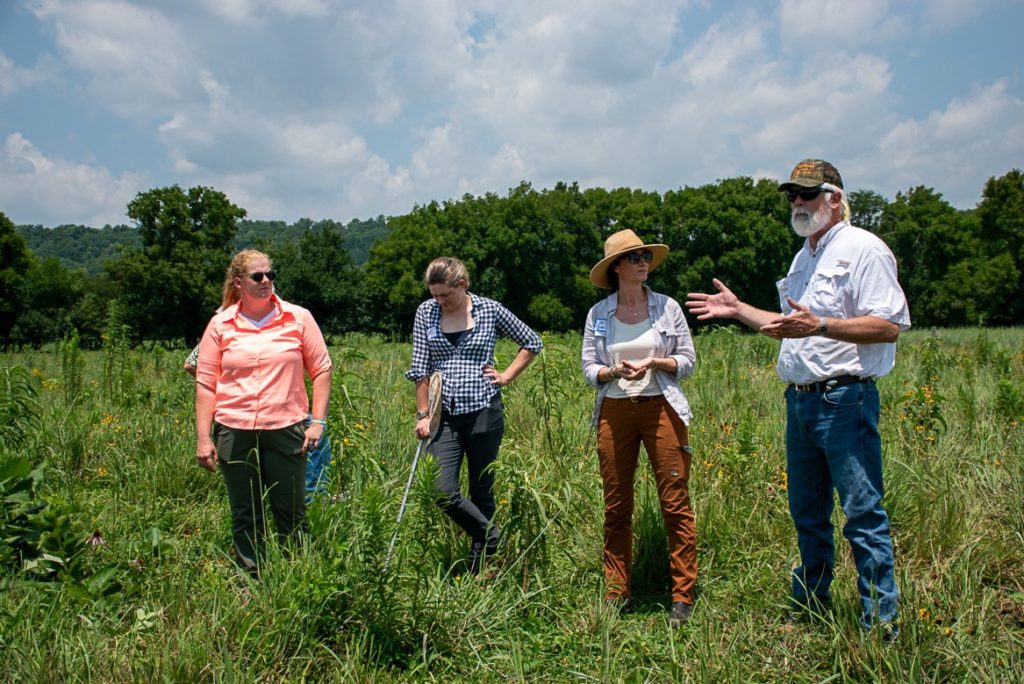 Pat Keyser talks to attendees at Beef and Bees Workshop while standing next to (from left) Jessica Prigge, Parry Kietzman and Amy Johnson, at East Tennessee AgResearch and Education Center-Holston Unit.
Pat Keyser talks to attendees at Beef and Bees Workshop while standing next to (from left) Jessica Prigge, Parry Kietzman and Amy Johnson, at East Tennessee AgResearch and Education Center-Holston Unit.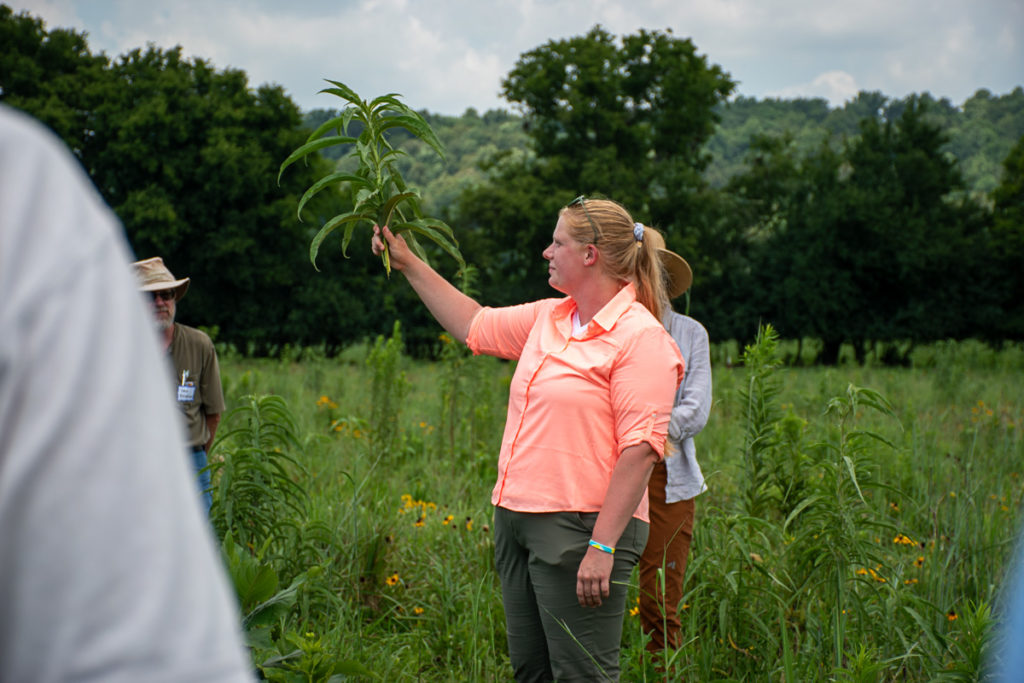 Jessica Prigge shows an example of a native forb during Beef and Bees Workshop at East Tennessee AgResearch and Education Center-Holston Unit.
Jessica Prigge shows an example of a native forb during Beef and Bees Workshop at East Tennessee AgResearch and Education Center-Holston Unit.
Dr. Amy Johnson with the Smithsonian Institution and Dr. Parry Kietzman of Virginia Tech University also gave a presentation on pollinators in diversified pastures and case studies from bee-friendly beef farms in Virginia.
Roughly 60 people, including landowners and federal and state agency representatives, attended the workshop at the Plant Biotechnology Building on the UT Institute of Agriculture’s campus. In the afternoon, the group went to the East Tennessee AgResearch and Education Center-Holston Unit to see native grass pastures interseeded with native forbs.
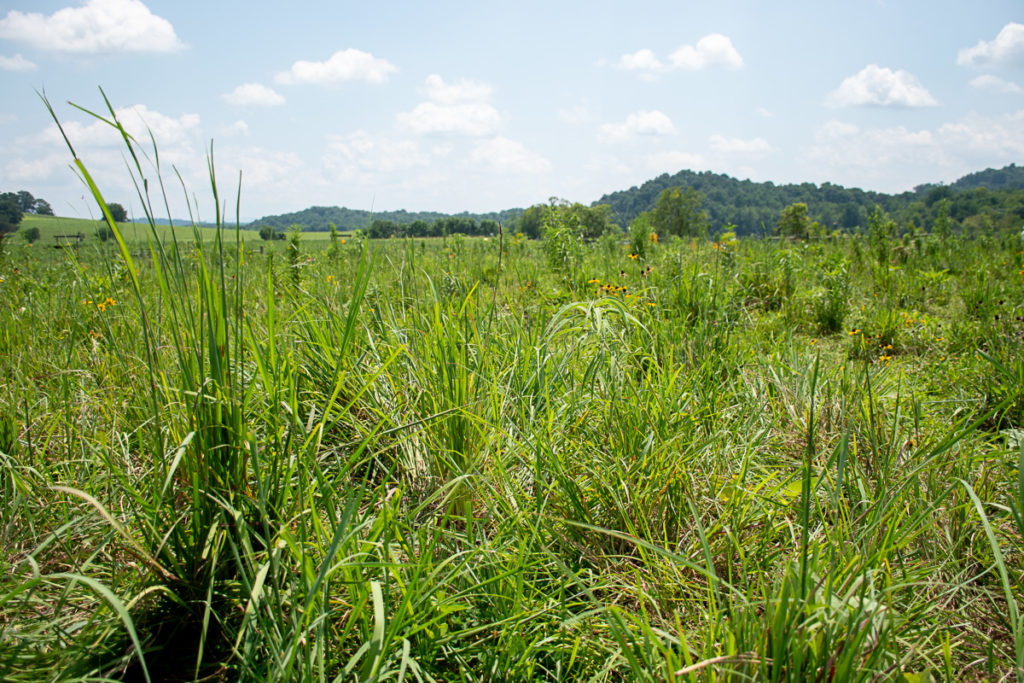
The workshop covered how to introduce native forbs to pastures, how to control weeds and how animal performance and pasture productivity compares to pastures without the forbs.
You can find the presentations on the Center for Native Grasslands Management website.
Funding support came from the UT Foundation, USDA Natural Resources Conservation Service Conservation Innovation Grant, USDA Agriculture and Food Research Initiative, UT AgResearch, UT School of Natural Resources and Ernst Conservation Seeds.
